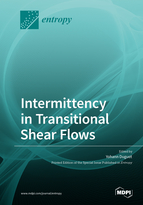Intermittency in Transitional Shear Flows
A special issue of Entropy (ISSN 1099-4300). This special issue belongs to the section "Complexity".
Deadline for manuscript submissions: closed (31 October 2020) | Viewed by 25490
Special Issue Editor
Special Issue Information
Dear Colleagues,
The transition to turbulence in fluid flows remains one of the unsolved problems of classical physics. An especially challenging configuration occurs when laminar and turbulent flows coexist in both space and time, as revealed by an ever-increasing number of experimental and computational investigations. This concerns most flows in simple geometries such as pipes, ducts, channels, and also boundary layer flows. Many issues, such as the analogy with phase coexistence in thermodynamics, the low-dimensional modeling of the spatial self-organization of the flow or its relevance in various fields of application, remain open today. This Special Issue will be an ideal opportunity to review and gather the latest progress on this fascinating interdisciplinary topic at the crossroad among hydrodynamics, complexity theory, and statistical physics.
Dr. Yohann Duguet
Guest Editor
Manuscript Submission Information
Manuscripts should be submitted online at www.mdpi.com by registering and logging in to this website. Once you are registered, click here to go to the submission form. Manuscripts can be submitted until the deadline. All submissions that pass pre-check are peer-reviewed. Accepted papers will be published continuously in the journal (as soon as accepted) and will be listed together on the special issue website. Research articles, review articles as well as short communications are invited. For planned papers, a title and short abstract (about 100 words) can be sent to the Editorial Office for announcement on this website.
Submitted manuscripts should not have been published previously, nor be under consideration for publication elsewhere (except conference proceedings papers). All manuscripts are thoroughly refereed through a single-blind peer-review process. A guide for authors and other relevant information for submission of manuscripts is available on the Instructions for Authors page. Entropy is an international peer-reviewed open access monthly journal published by MDPI.
Please visit the Instructions for Authors page before submitting a manuscript. The Article Processing Charge (APC) for publication in this open access journal is 2600 CHF (Swiss Francs). Submitted papers should be well formatted and use good English. Authors may use MDPI's English editing service prior to publication or during author revisions.
Keywords
- laminar–turbulent coexistence
- intermittency
- shear flows
- turbulent flow
- transition to turbulence







